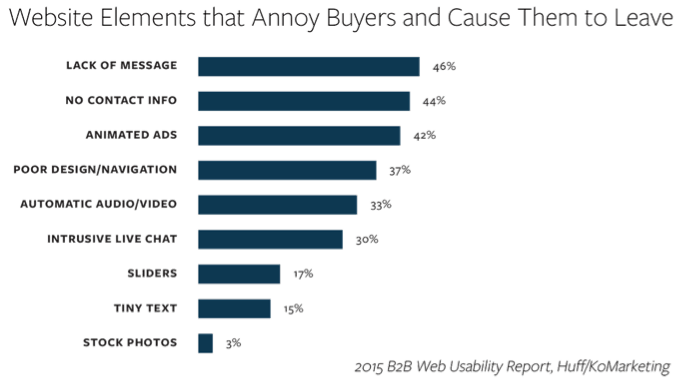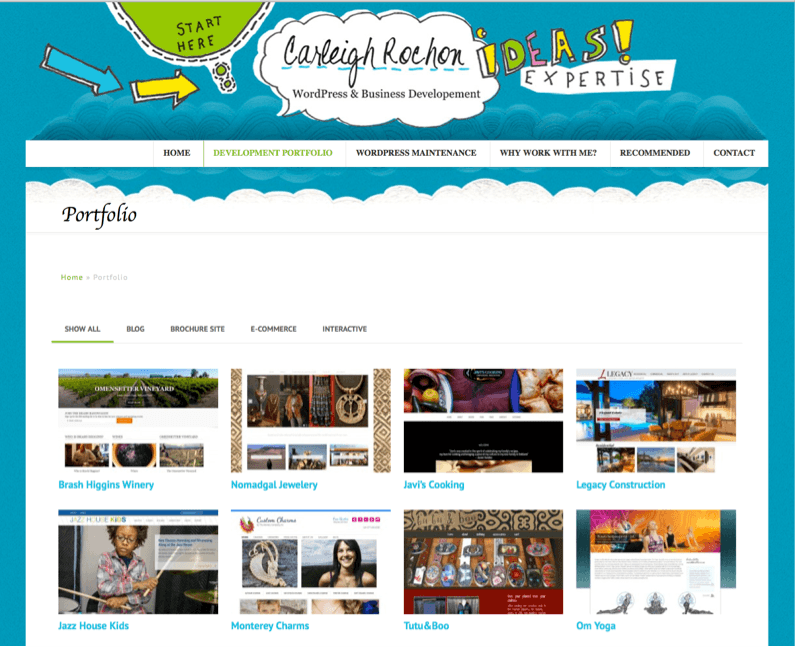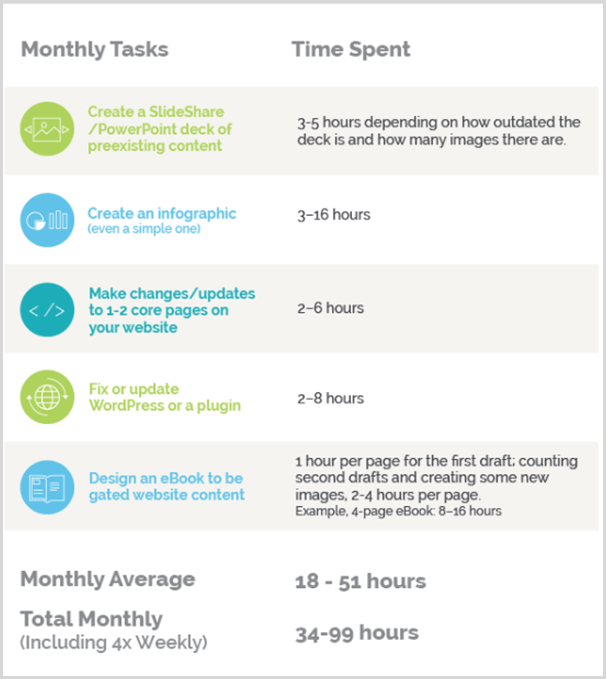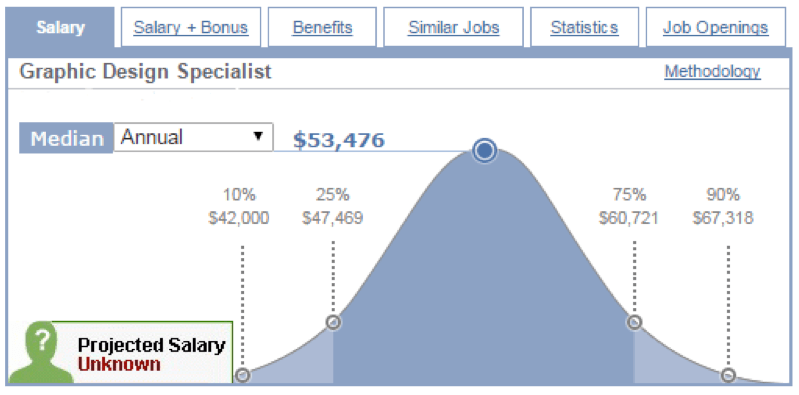 Looks matter. That might not seem fair, but it’s true. You can write a really fabulous eBook, but if it’s not well laid out and there are no images to help tell the story, your intended reader might pick your competitor’s colorful infographic instead.
Looks matter. That might not seem fair, but it’s true. You can write a really fabulous eBook, but if it’s not well laid out and there are no images to help tell the story, your intended reader might pick your competitor’s colorful infographic instead.
Good looks attract eyeballs for your infographics, and ads, and eBooks, and especially for your website. While you can launch a website and make do with doing your own design work for a while (and maybe one of your salespeople can lay out a data sheet), at some point, it simply makes good business sense to hire a designer.
Yep – it’s good business to have a good-looking site and good-looking collateral. Because poor execution on both, or either, will cost you business.
Let’s take a closer look at the biggest issue: how design affects your website.
Design and your website
I don’t mean to disparage your website visitors, but here’s the truth: They’re biased. Prejudiced. Downright dismissive.
Most website visitors give a site a whole 0.05 seconds before they make up their minds about it. After that, if they bother to stay, that first impression will frame how they see every other piece of information you offer.
Bad design hurts your bottom line
Want more proof? The 2015 B2B Web Usability Report by Huff Industrial Marketing, KoMarketing, & BuyerZone, found bad design causes 37% of people to become annoyed and leave a site.

-
Over a third of B2B website visitors say poor design or navigation is enough to make them leave a site.
So, there’s your measurement for how to decide if hiring a web designer is a smart business move: What’s it worth to you to get a third more of the people who come to your site to stay? Or if you want to focus on another aspect of ROI – what would it be worth to you if your site got one third more conversions?
That’s a crude measurement for whether it’s time to hire a designer, but it starts to frame what it’s costing you to have a poor-looking site.
Bad design may also be costing you more than the visitors who leave your site. It may be preventing some website users from ever seeing your site in the first place.
Bad design costs you traffic, too
Thing is, bad design can affect website rankings. This can be caused by bad technical SEO – the site loads slowly, information isn’t marked up properly, or your pages are missing important tags. But, it can also be caused by simply serving up a poor user experience. Search engine ranking signals are more and more focused on user experience.
Here’s an example of that: As Google watches for signs of a poor user experience, it notices when a searcher returns to the same search engine results page and clicks on another listing. That indicates that the page didn’t answer the searcher’s question. If the searcher rewords the query, that’s another sign that the result didn’t match the user’s intent.
When is do-it-yourself (DIY) enough?
Clearly, good design is a strategic business investment. It’s not just to look cool – it affects your revenues. But does that mean you have to hire a designer? What if you’ve got some (modest?) design skills and want to do it yourself?
Well, assuming you’ve got those skills, you can do it yourself. However, given the time it can take, you may want to re-think what your time is worth and how you should spend it.
Here’s a typical production schedule for a small company. You can use this as a template and add or subtract what will make it look more like your own potential weekly design work schedule:
- Format blog post(s) and create a header image for each.
- Lay out an email campaign, perhaps with the new post and other content.
- Create an image or meme for at least one social media update per day.
Then maybe once a month:
- Design an eBook to be gated website content.
- Create a PowerPoint deck or repurpose a deck in your archive for SlideShare.
- Create an infographic (even a simple one).
- Make changes/updates to 1-2 core pages on your website.
- Fix or update WordPress or a plugin.
That’s a basic amount of design work a small company needs for content marketing. Your company’s needs will be a bit different of course. But you get the gist.
So how long does it take to do all that?
Those are very rough figures. Your mileage will vary depending on what you can reuse and what needs to be built from scratch, and how aggressive your publishing schedule is. We figured one high-quality 4-page eBook each month (that’s aggressive for a small in-house team), and just one blog post weekly (that’s not so aggressive). Also, how high are your design standards? Can you get away with a lick-and-a-promise, or do you (or does your boss) want highly polished output?
Even at the minimum, 34 hours of work every month is still a lot. If you love doing design work, and it’s not pushing out higher-priority tasks, that’s A-OK. You might want to keep doing it.But if you’re not loving it, or it’s taking too much time, or you’ve got other, more pressing things to do, it’s probably time to hire design help.
What will a designer cost?
Figure $50 an hour or more, which pencils out as $1,700–$4,950 month for the hours noted above. It’s possible you could trim that to less per hour if you can promise a steady gig, and you’ll give your designer at least a month’s notice if you have to cancel.
Can you get design help for less? Absolutely. Is it going to be top notch? Unlikely.$50 an hour is a respectable rate for a designer who knows what they’re doing, knows how to help you, and runs their business in a sustainable way as a full-time job.I’d be wary of anyone charging less than $25 an hour. They are probably a new designer or are just figuring out how to run their business.
Remember, freelancer’s hourly rates don’t at all line up with employees’ hourly rates. Freelancers have to build in costs for extra taxes (the self-employed get taxed twice), sick time, holidays, vacations, computer and office overhead, admin, and more. Some experts advise freelancers (writers, designers, others) to consider that given the time it takes for them to perform admin tasks and do their own marketing, they have about 1000 billable hours a year to sell.
The new freelancer often forgets or underestimates just how much their overhead will be, and so undercharges. The good, smart ones don’t make this mistake two years in a row.If you hire a designer full-time, the median salary is $53,476, according to Salary.com. But note the high and low range, the value of benefits such as health insurance and vacation, and bonuses and/or profit sharing. It adds up to more.
You can also try an online design services firm
These are relatively new on the block, but they’re promising. Here’s how they work: You pay a flat fee every month. That buys you unlimited design services with certain restrictions such as:
- How many jobs you can submit at once
- How many users you can have on the account
- Whether you get a dedicated designer for your jobs
- How quickly your jobs get completed (usually one to three days)”
Here are a few companies who offer this approach, what they charge and what they deliver:
- DesignPickle $370-$495 per month.
- 1-3 days to turn work around. Work delivered in multiple formats. Unlimited revisions.
- Undullify $29 per task to $399 per month unlimited. Pretty much the same benefits as DesignPickle.

- WPCurve
- These guys don’t offer design services, but they’ll fix any WordPress issue you have for $79 per month. It goes up to $99 or $199 per month if you want security, upgrade, and backup support. These types of services are sometimes delivered by web designers, but they veer into the realm of web developers – people who can write code and do custom installs and integrations and such.
Of course, many other design firms and freelancers offer monthly packages.What to look for in a graphic designerSo you know what you want to have done and you know how much it’s probably going to cost. You’ve done some research and found there are thousands of web designers to choose from. What’s next?
How to screen and assess a website designer
Your next step is to work through this checklist – it’s short, but your new designer should meet every one of these criteria:
- Can they show you samples of their work?
- Can they give you three references to contact?
- Does their design style match what you want your site to look like?
- Can they implement their design changes? Some web designers can’t actually make changes in WordPress (or other content management systems); they only create and submit designs. If this is an important piece of your puzzle, let the ad agencies work with these designers. You will need someone who’s more hands-on.
- Do they know what a creative brief is?

-
Professional web designers like Carleigh Rochon will have ample examples of the work they’ve done for other clients.
Not necessary, but nice:
- Do they have a design degree, a certification, or at least two years’ experience designing websites and working with clients?
- Do they have at least an intermediate understanding of SEO?
- Are they at least editorially aware enough to spot a typo in a major image, such as a blog post header?
- Do they have any promotion or advertising experience?
- Have they worked in your niche or industry before?
If your designer can answer yes to all the essentials, and most of the “nice to haves”, you may have a winner. Now, it’s just a matter of on-boarding them carefully, perhaps with a 2-3 small, well-defined projects. If those go well, congratulations. Your business is looking better all the time.For more information on key players who might transform your business, take a look at The High-Performance Marketing Department. This guide will help you plan for the skill sets needed in a modern marketing department and show you how to staff for maximum impact.
Now, it’s just a matter of on-boarding them carefully, perhaps with a 2-3 small, well-defined projects. If those go well, congratulations. Your business is looking better all the time.For more information on key players who might transform your business, take a look at The High-Performance Marketing Department. This guide will help you plan for the skill sets needed in a modern marketing department and show you how to staff for maximum impact.



